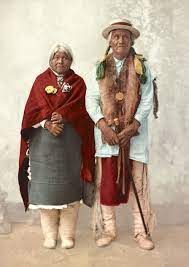Tawehash Indians
Tawehash Indians. Meaning unknown. Lesser and Weltfish (1932) suggest that this group was identical with a Wichita band reported to them as Tiwa. They have been given some of the same synonyms as the Wichita. Tawehash Connections. The Tawehash belonged to the Caddoan linguistic stock and were related closely to the Wichita, Tawakoni, Waco, and Yscani. Tawehash Location. Their earliest known home was on Canadian River north of the headwaters of the Washita. Tawehash Villages. In 1778 Méziéres found two native villages to which he gave the names San Teodoro and San Bernardo. Tawehash History. The Tawehash were encountered in … Read more


